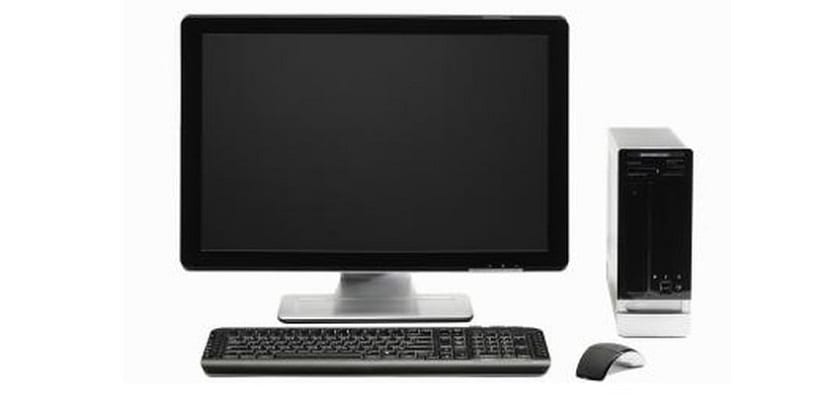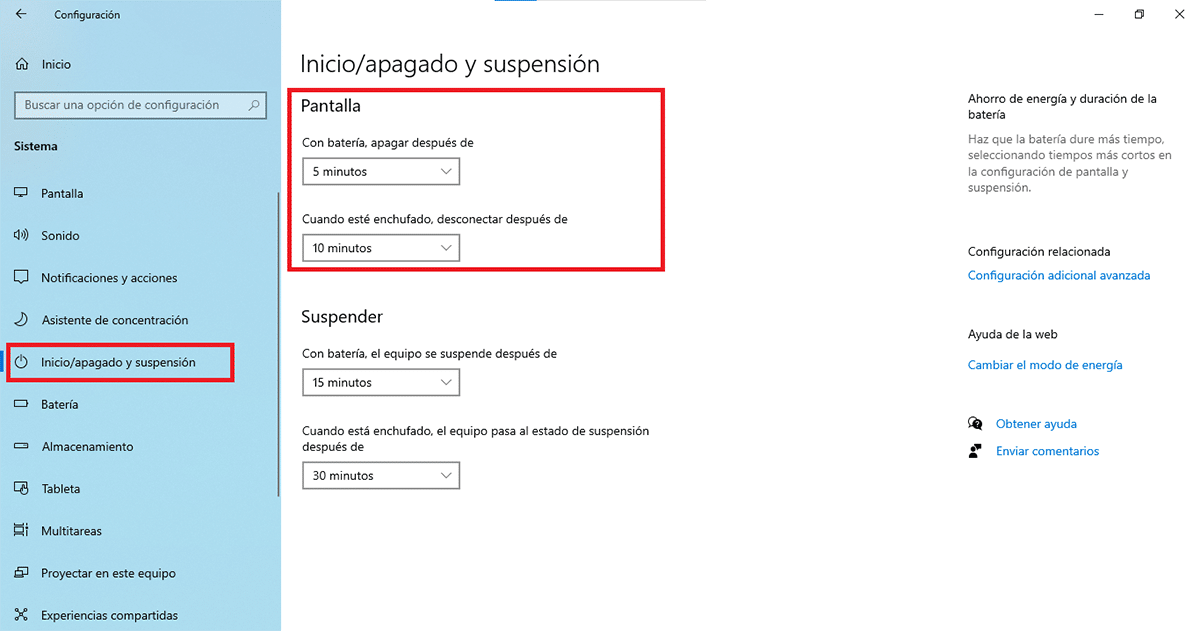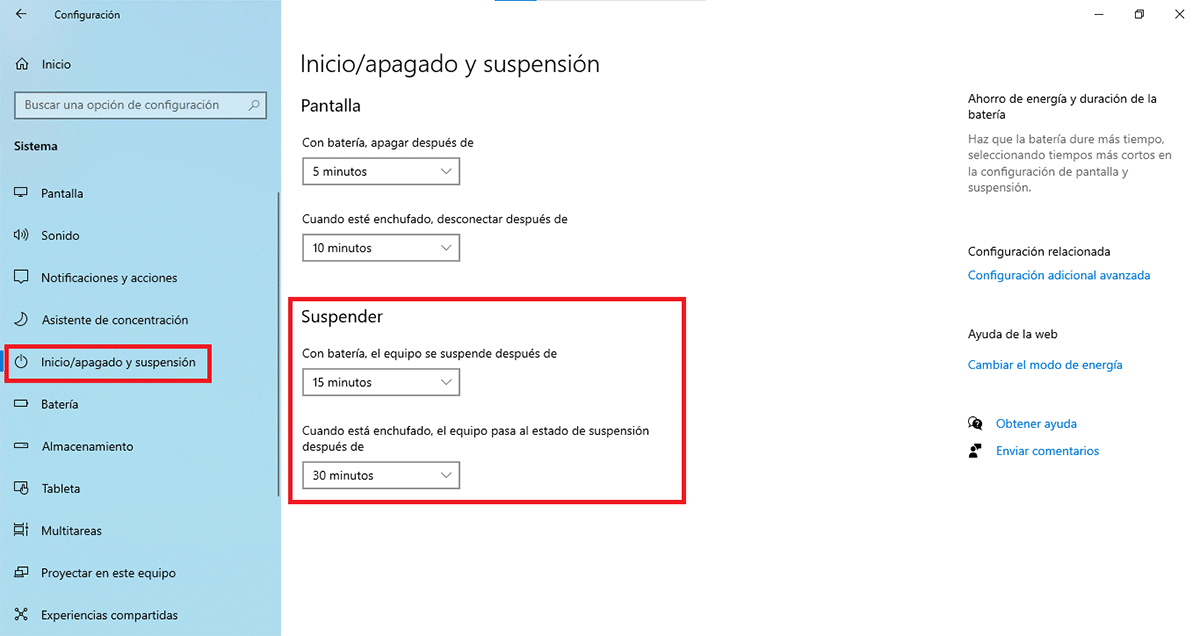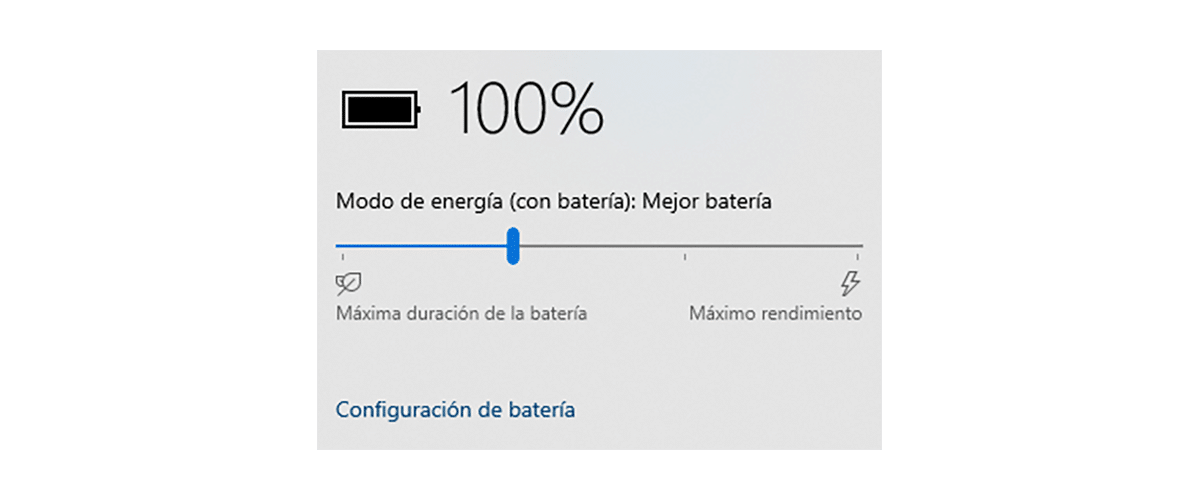
How to make the screen not turn off in Windows 10, Windows 11 or previous versions is what we are going to teach you in this article.
In addition, we will also help you to configure your laptop to minimize battery consumption when it is not connected to the network.
Why does the screen turn off in Windows 10
Windows, like macOS, iOS, and Android, include a number of features aimed at reducing electricity consumption. Natively, these operating systems are configured with default options that meet the needs of most users.
In this article, we are not going to focus on the options that are available within Windows. But first, we must know that the operating options vary depending on whether it is a laptop or desktop computer.
Whereas a laptop has two power settings that it switches between if it's running on battery or plugged in, on a desktop, only one option is available.

Regardless of the power plan that we have activated in Windows, the system will turn off the screen automatically when the time set to turn off the screen has elapsed as long as a static image is displayed on the screen.
If you're watching a video, whether it's through an application or a streaming platform (YouTube, Netflix, HBO...), your computer's screen will never turn off.
How to make the screen not turn off

Depending on whether we are using the battery of our laptop, if it is connected to the electrical network or if it is a desktop computer, the steps that we must follow to prevent the screen from turning off are different.
If we are using a laptop with battery
Windows, by default, is set so that when the laptop is using battery power, the screen turns off after 5 minutes.
If we do not want it to turn off or modify the time from the last time we interact with it until the screen turns off, we must perform the following steps:
- We access the Windows settings through the Windows key + i shortcut.
- Next, click on System.
- Within System, click on Start / shutdown and sleep.
- In the right column, in the section Screen, click on the drop-down box with the name With battery, turn off after and we select the option we want.
If we are using a connected laptop or a desktop computer
When it comes to a laptop connected to the electrical network or a desktop computer (in the latter the previous option will not appear as it does not incorporate a battery), the system is configured to turn off the screen after 15 minutes have elapsed since the last time we interacted with it. the.
To modify that time, either to extend it, reduce it or directly prevent it from turning off, we must carry out the steps that I show you below:
- We access the Windows settings through the Windows key + i shortcut.
- Next, click on System.
- Within System, click on Start / shutdown and sleep.
- In the right column, in the section Screen, click on the drop-down box with the name When plugged in, unplug after and we select the option we want.
How to make the computer not turn off automatically

Once the screen of the laptop or desktop computer has been turned off automatically.
If the computer is still running, but no one is interacting with it, the next step for Windows is to shut it down.
Well, actually, it doesn't turn it off, I keep going to sleep. When a computer goes to sleep, it pauses completely.
We just have to touch the keyboard or move the mouse so that the computer wakes up and shows us the screen where we had left it.
This way, if you leave a document halfway on your computer and haven't saved it, you can pick up where you left off.
Prevent the computer from shutting down on a battery powered laptop
Windows automatically sets your computer to automatically sleep after 15 minutes when you're using battery power, as long as you don't interact with it in that time.
If you want to extend or reduce that time, you must perform the following steps:
- We access the Windows settings through the Windows key + i shortcut.
- Next, click on System.
- Within System, click on Start / shutdown and sleep.
- In the right column, in the section Lay off, click on the drop-down box with the name With the battery, the equipment is suspended after and we select the option we want.
Prevent computer from shutting down on a connected laptop or desktop
When you don't interact with a networked laptop or desktop computer for 30 minutes, the computer will automatically go to sleep.
If we do not want it to turn off, extend or reduce the time, we must perform the following steps.
- We access the Windows settings through the Windows key + i shortcut.
- Next, click on System.
- Within System, click on Start / shutdown and sleep.
- In the right column, in the section Lay off, click on the drop-down box with the name When plugged in, the computer goes to sleep after and we select the option we want.
Suspending the computer is not the same as turning it off. As I have mentioned, if you suspend the equipment, you pause the operation of the equipment and you can resume it immediately. But if you turn it off, the system will load from the beginning and you will have to open the applications you want to use.
How to save battery on a laptop

Windows includes an automatic battery management system on laptops. When the equipment is connected to the electrical network, we will be able to take full advantage of it, just like if it is a desktop computer.
However, when we are using the battery of our computer, Windows automatically reduces the performance of the computer.
If we want the performance to remain the same, we must click on the battery icon located on the right side of the taskbar and slide the bar to the right. This will reduce battery life.

But, if we move it to the left, the battery life will be prioritized. Your computer will be slower and apps will take longer to open, but battery life will last longer.
Also, by prioritizing battery life, the brightness level will be reduced, as the screen is one of the most consuming components to have in a laptop.
In addition, we must minimize the waiting time until the screen turns off and goes to sleep, as we have explained above.